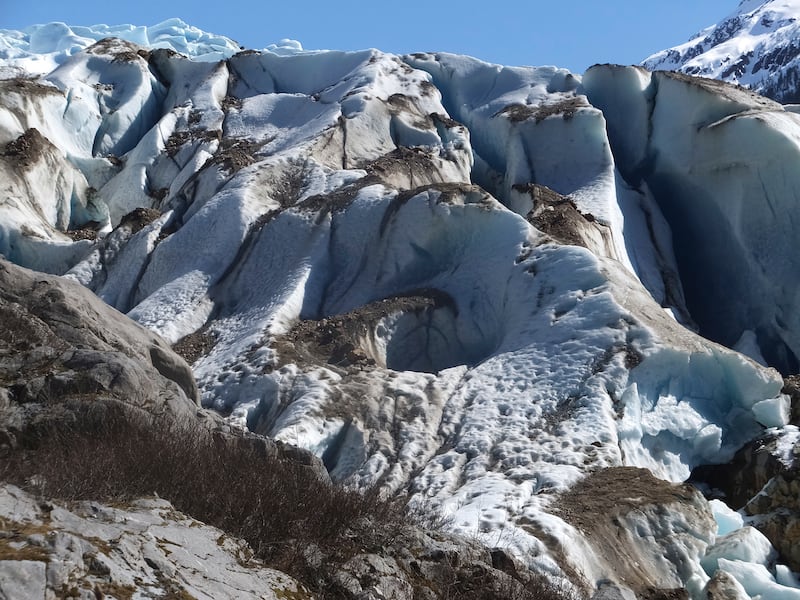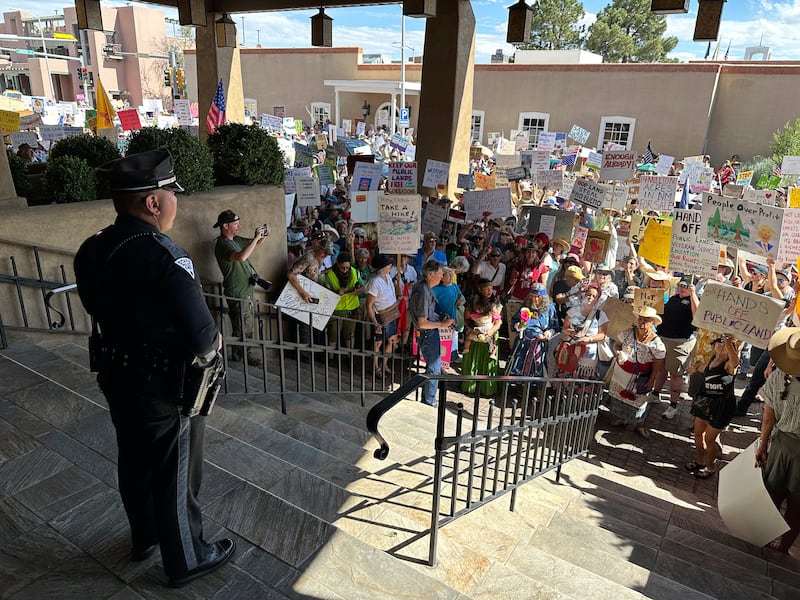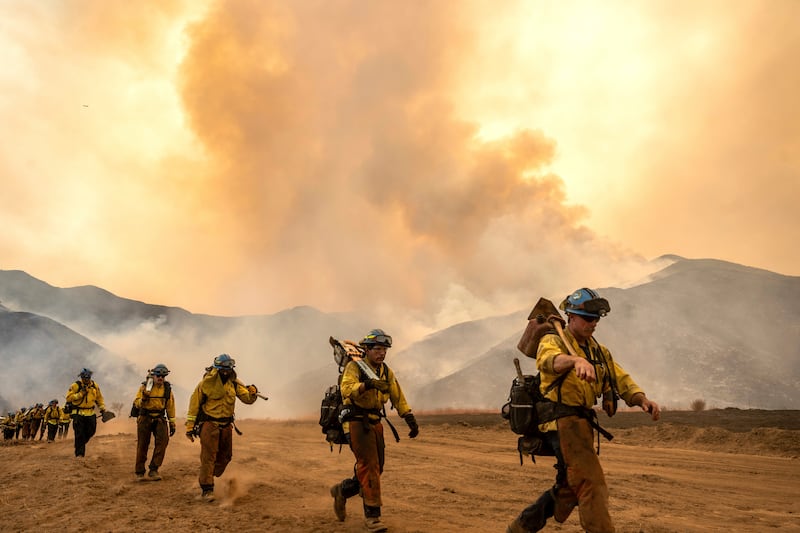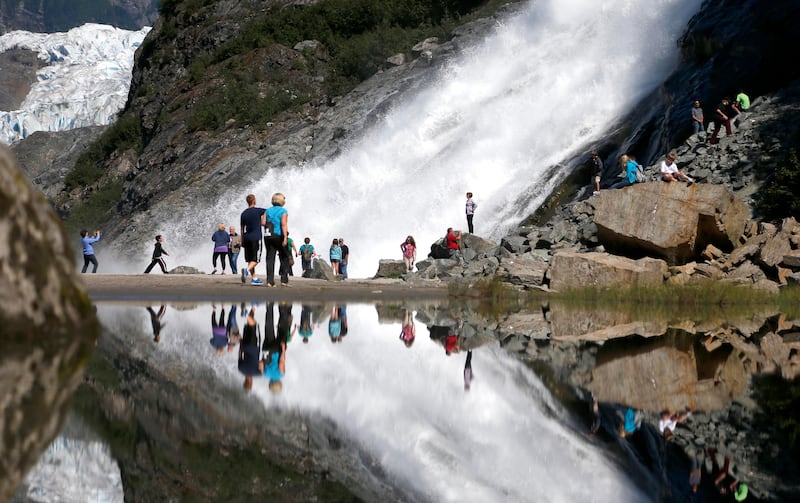- The Trump administration wants to repeal the Roadless Rule that keeps millions of acres of public land from development.
- Forest Service Chief Tom Schultz said the rule is a harmful, restrictive regulation and forests should be managed locally.
- Conservationists say the rule serves the country well and a repeal would lead to development and degradation.
In late June, Agriculture Secretary Brooke Rollins announced at the Western Governors’ Association in New Mexico that the USDA would be repealing the 2001 Roadless Rule.
It’s a policy that prohibits the building of roads on 44.7 million acres of public lands (which was initially 58.5 million, but several states have carved out exceptions for themselves) that was implemented to conserve and protect just 2% of remaining American ecosystems from development.
That small percentage is a massive amount of land representing about 30% of the entire area managed by the U.S. Forest Service.
The rule was implemented after three years of analysis, with an exhaustive collaborative process that included over 400 public meetings, attended by more than 20,000 participants. During the public comment period, 1.6 million submissions were received, of which, about 95% supported roadless protections.
In the last 24 years, however, quite a bit has changed. Not just in terms of the political temperament of the nation, but what is transpiring in the forests and how land managers believe they are best stewarded.

“There is this inherent narrative that’s out there that somehow, if we want to protect something, we leave it alone. What I have seen in my tenure in managing forests — which runs almost 30 years — is leaving things alone does not mean that things will be managed," Tom Schultz, chief of the Forest Service, said in an interview with the Deseret News.
“This notion of, if I want to protect something, I leave it alone, that’s a fallacy. That’s a false narrative.”
Schultz’s assertion is disputed by conservationists, ecologists and outdoor recreationists who question that logic and approach, but is still one that the Trump administration is moving quickly to adopt.
“For nearly 25 years, the Roadless Rule has safeguarded America’s backcountry — lands that are home to 70% of our native trout and salmon, that protect drinking water for millions, and that offer some of the finest hunting and fishing opportunity in the world,” Chris Wood, president of Trout Unlimited, said in a statement.
Wood, who was the senior policy and communication advisor to the Forest Service chief when the rule was implemented, called it one of the most significant and popular conservation achievements in U.S. history. “We urge USDA to keep these protections in place,” he said, “and we’re committed to working with them to ensure these lands are managed wisely, for the benefit of everyone.”
Following the required procedures of the Administrative Procedure Act, Rollins announced last week that the USDA would begin taking public comment on a proposed repeal of the Roadless Rule.
Setting a window of 21 days from Aug. 29 through Sept. 19 for the public to weigh in — public comments can be made here — a full environmental impact review will follow. While the initial review took 15 months following the comment period, the federal notice for the repeal set a March 2026 date for a final decision.
“It’s us moving expeditiously through the process to make sure that we can consider what needs to be considered, get the public input, and make decisions as we move on,” Schultz said.
“We are racing against time to make sure that we’re doing the right thing on the ground to protect communities and manage the resources that we have for rural prosperity, while at the same time protecting the environment.”
Why repeal the roadless rule?

In public comments made since Rollins’ June announcement, the Trump administration has raised broader issues with regulation and moving decision-making from the federal government to local land managers. But in terms of the lands themselves, it mostly emphasized addressing the increased risks of wildfire, while only including increased timber logging in published plans.
“Once again, President Trump is removing absurd obstacles to common sense management of our natural resources by rescinding the overly restrictive roadless rule,” Rollins said in a statement. “It is abundantly clear that properly managing our forests preserves them from devastating fires and allows future generations of Americans to enjoy and reap the benefits of this great land.”
The references to the Trump administration’s removal of obstacles alludes to several executive orders that the president signed earlier this year.
Suggesting that the country was “at risk” due to reliance on foreign nations for energy and timber, Trump declared an intent to maximize the natural resource extraction from our public lands as they represent a potential engine of economic growth through several orders, one called "Immediate Expansion of American Timber Production."
Another executive order is titled "Unleashing Prosperity Through Deregulation‚" and in it he set a clear tone regarding federal regulations. Rather than seeing them as helpful guardrails protecting America from itself, they are considered roadblocks to growth and needless hindrance of progress.
“As you look at the regulatory burden across government — that’s a big one — how do we reduce the regulatory burden?," Schultz said. “Particularly with roadless ... We’re talking, you know, 60 million acres nationally, and the inability to manage those lands, in many cases, they would need to be managed.”
He added that, “Anytime we try to take things off the table and not allow for local conditions, local public input into that process, to my mind that is somewhat problematic.”
How would roads help fight wildfire?

Since the mid-1980s, 13% of roadless Forest Service areas — over 5 million acres — experienced some form of intense wildfire. As the risks and scale of wildfires have increased across the country, they’ve also increased in the roadless areas.
Some parts of national forests such as in California have a 60% chance risk of wildfire, while others in the east have as low as 5%. While only some of those regions are roadless, there are still 10 million roadless acres that are near “wildland-urban interfaces,” or WUIs, where wildfire can be most destructive.
“If I have a community where we have the potential for loss of life, loss of property, am I not going to take every action possible to protect those communities?” Schultz said.
“If we truly want to protect some areas, you have to get in there, you have to be proactive. You have to build fuel breaks. You have to have roads in there to provide access to firefighters.”
There are provisions in the Roadless Rule, however, that allow for such treatments to occur. Trout Unlimited, a conservation nonprofit supporting waterways, found that nearly 2 million acres of inventoried roadless areas have received fuel treatments since 2001.
“This includes 14% of all hazardous fuels treatments on national forest lands in 12 western states,” one of its fact-sheet states.
“There are exemptions in the roadless rule to say, where we need to reduce fuels and go in and take out timber to reduce the risk of catastrophic wildfire (we can),” said Corey Fisher, public land policy director for Trout Unlimited.
“Rather than repealing the roadless rule, better using the flexibility and latitude that’s already built in would be a more effective and durable approach.”
Fisher pointed out that the state of Utah, for example, has done a lot of fuel reduction work in roadless areas.
“Of all the hazardous fuel projects that have happened in Utah on national forest land, 38% of those acres have been in roadless areas — 433,000 acres."
While there are risks associated with wildfire, there is also the relevant fact that most forest ecosystems are fire adaptive and need to burn.
Wildfire is a healthy and necessary part of a forest’s lifecycle — particularly in the regions such as Alaska and the Intermountain West. Fire poses a significant threat, yes, but it also needs to occur for those habitats to stay healthy and continue to flourish.
Another relevant fact is that the majority of wildfires that start in the United States, not only are caused by humans, but happen near roads. Studies have shown that far more fires start near roads, even though the ones in roadless areas do tend to burn larger.
“Wildfire starts are strongly correlated to roads,” Fisher said. “If we’re building more roads, it’s not unreasonable to assume then that we’re gonna be starting more wildfires in areas that otherwise wildfires wouldn’t be starting.”
“That’s one of the reasons why we do see larger fires in roadless areas,” he said. “Because those areas do need to burn.”
Concerns about the process
In the years since the Roadless Rule was enacted, a consistency and certainty about how roadless lands managed has settled in, said Fisher. There is no longer any pending litigation and it’s been 13 years since the Supreme Court last declined to hear a case about it.
“If this repeal goes forward, it creates a lot of uncertainty for all users, whether it’s the timber industry or hunters and anglers about how these lands are going to be managed,” he said.
That uncertainty would not make the management of the land any easier.
Additionally, Rollins has repeated that the USDA is going to repeal the Roadless Rule, but is also following the Administrative Procedure Act, which requires public comment and a full environmental review.
To Fisher, that makes the process seem performative.
“One of the concerns is that the process is pre-decisional and it’s, in some ways, perfunctory,” Fisher said. “At the same time, the Forest Service is saying, ‘Hey, we want to hear from for stakeholders and user groups to help us identify a range of alternatives for evaluation.’”
Fisher believes that the confusion between Rollins’ public statements and the limited window for public comment opens the door for litigation and, ultimately, just more confusion about what is and is not the law.
“Whereas if the agency took a slower, more deliberative, collaborative approach and built support for a roadmap for roadless management, then that would build certainty and durability behind what the agency’s trying to do here,” Fisher said.
But instead, this process is creating new opportunities for various interest groups to find contention. The Roadless Rule has a long history of litigation and repealing it, Fisher said, just opens up a whole new era of litigation chaos.
“Frankly, (this) isn’t going to help achieve the mutual goals that the Forest Service and conservationists have of improving forest health and restoring our national forest system, to make safer communities and improve fish and wildlife habitat,” he said.
What’s next
“It’s premature, at this point, to say what exactly the action that the secretary might take. She’s clearly made her intentions known, but it’s no different than other things done,” Schultz said.
“We’re taking public comment. We’re gonna read through it. We’ll analyze it and provide the feedback to the secretary and it’ll be her decision in terms of how we proceed.”
Once the public comment period is over, where 16,657 have already been submitted, then a full environmental review will begin.
“It’s not going to be a free-for-all. It’s going to be a thoughtful process,” said Schultz. “There’ll be public input, and then those forest plans, at some point in the near term, would be updated after we get to the rulemaking process. I mean, this is really important information.”
In the notice, the environmental impact evaluation priorities are to assess multiple use access; maintain forest health management, which includes fire suppression; conserving ecosystems, protecting threatened and endangered species, preserving recreation opportunities and cultural, sacred sites; and the impacts on local and regional economies.
The notice, too, clearly states that a repeal does not authorize any explicit timber harvesting, road construction or specific projects. Its purpose would be to pass off that analysis to local land managers.
There are many outdoor enthusiasts, sportsmen and advocates for the preservation of some American land that see a chance through the public comment period to protect some of the last remaining wild spaces.
“From clean drinking water to collaborative fire mitigation to our unparalleled year-round recreation opportunities, we have shown that the Roadless Rule has been a resounding success for the Wasatch Mountains,” wrote Jack Stauss of Save Our Canyons, a Utah nonprofit organization. “Undoing decades of protection could revert the Wasatch to thoughtless degradation and economic exploitation. Please make your voice heard for the Wasatch.”
It’s a sentiment that Fisher from Trout Unlimited stressed.
“These are public lands and the public needs to make their voice heard. And there’s a short 21-day opportunity to do that. Not just hunters, anglers, but all public land users need to weigh in on this issue and share why these public lands are so important to our way of life.”


